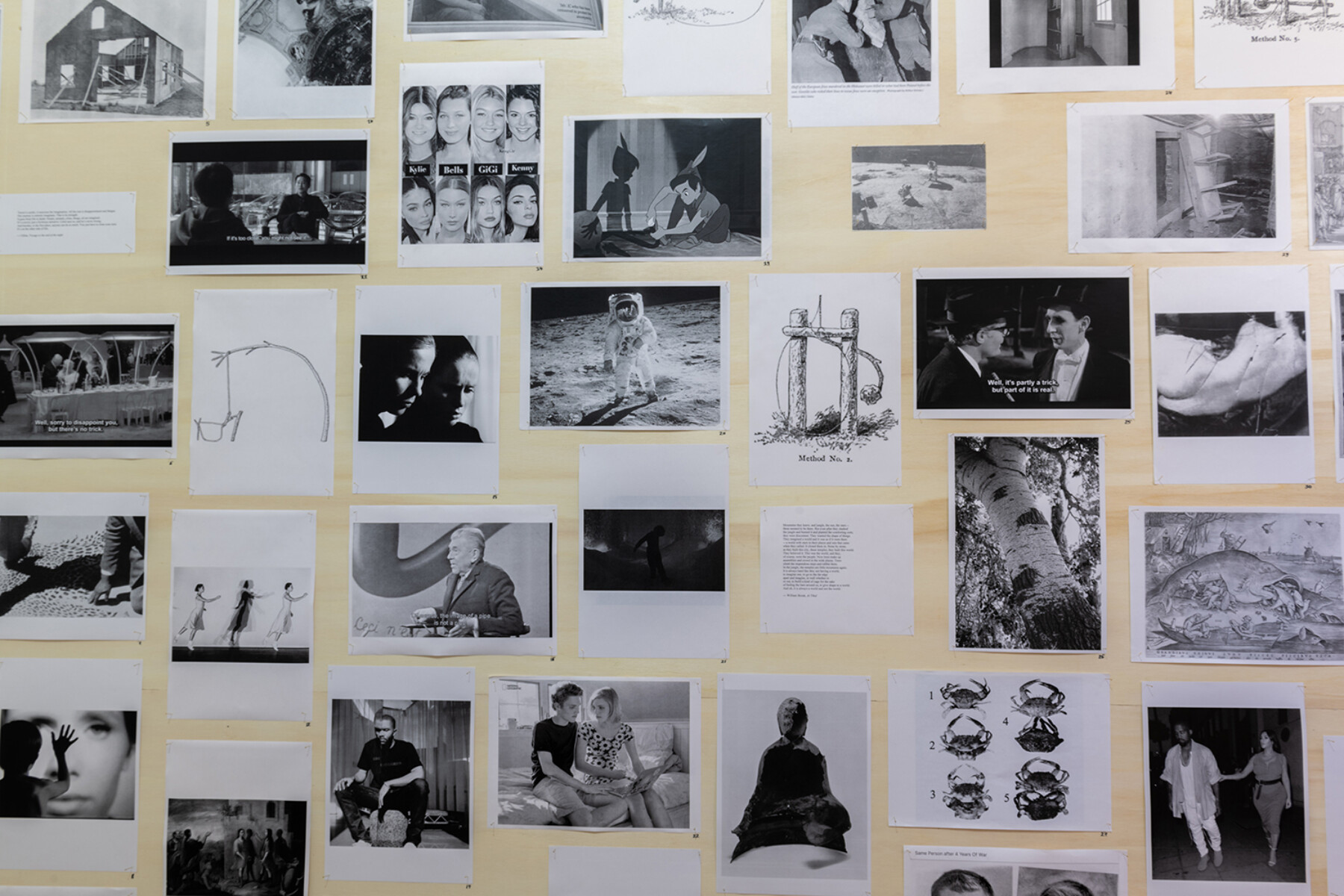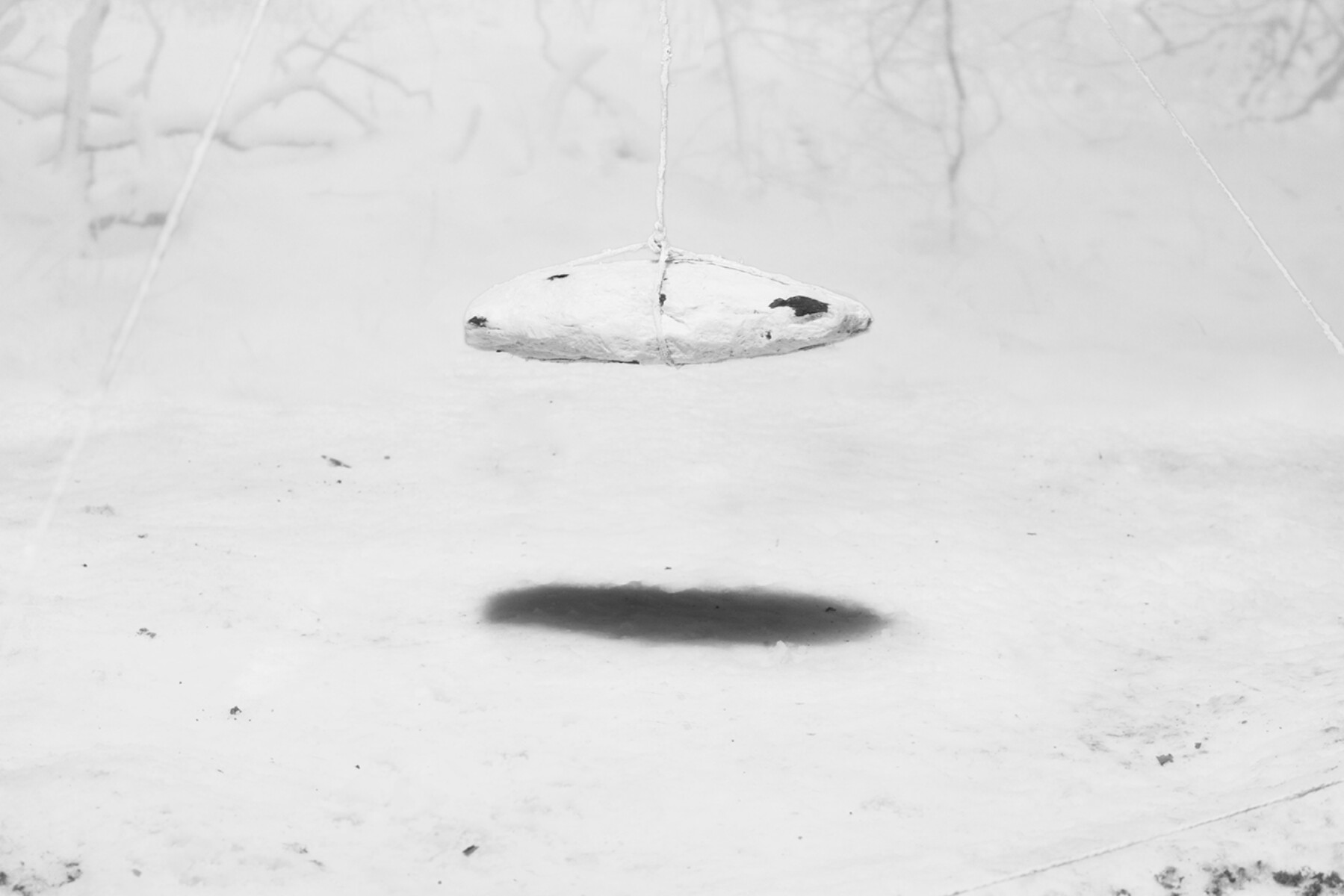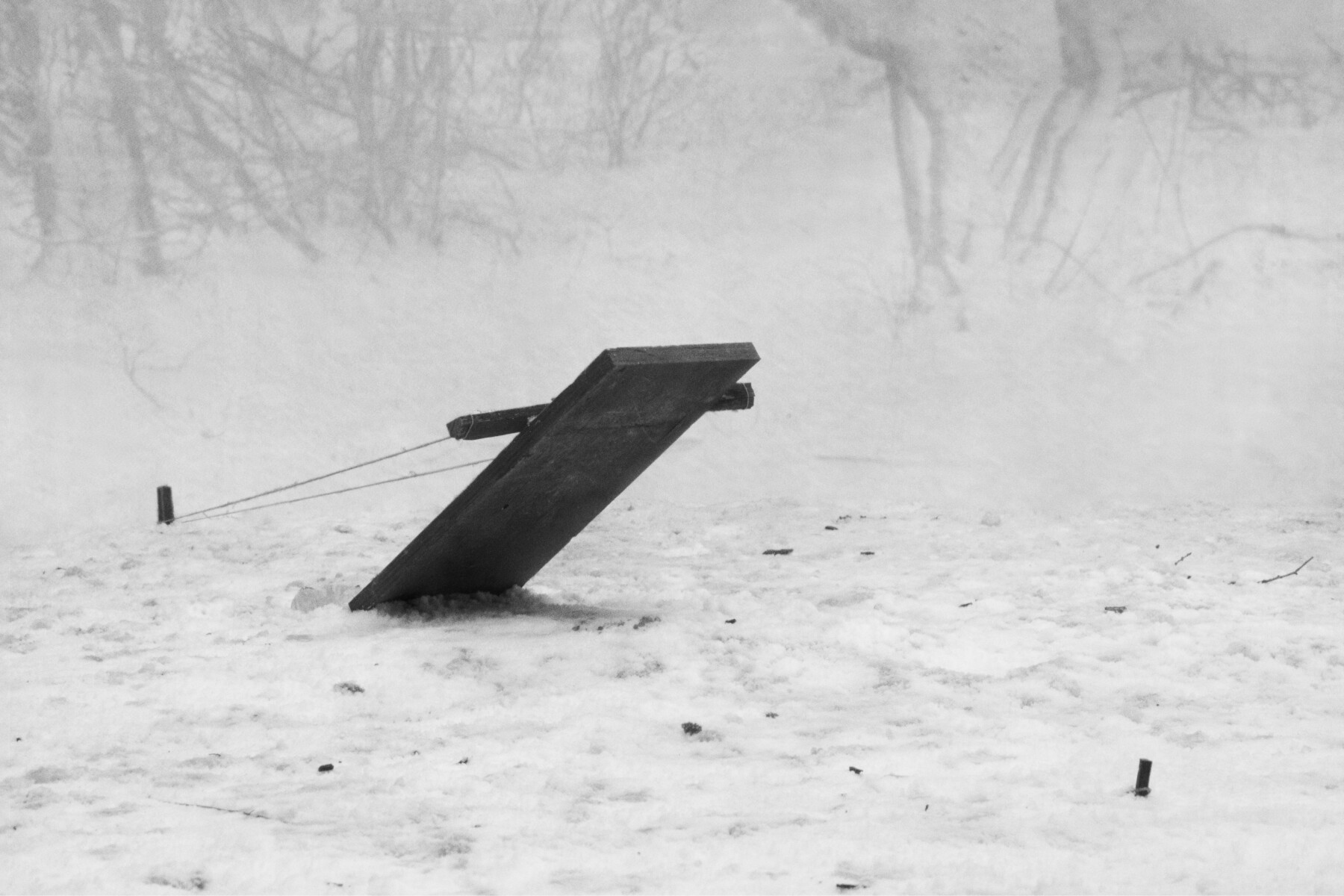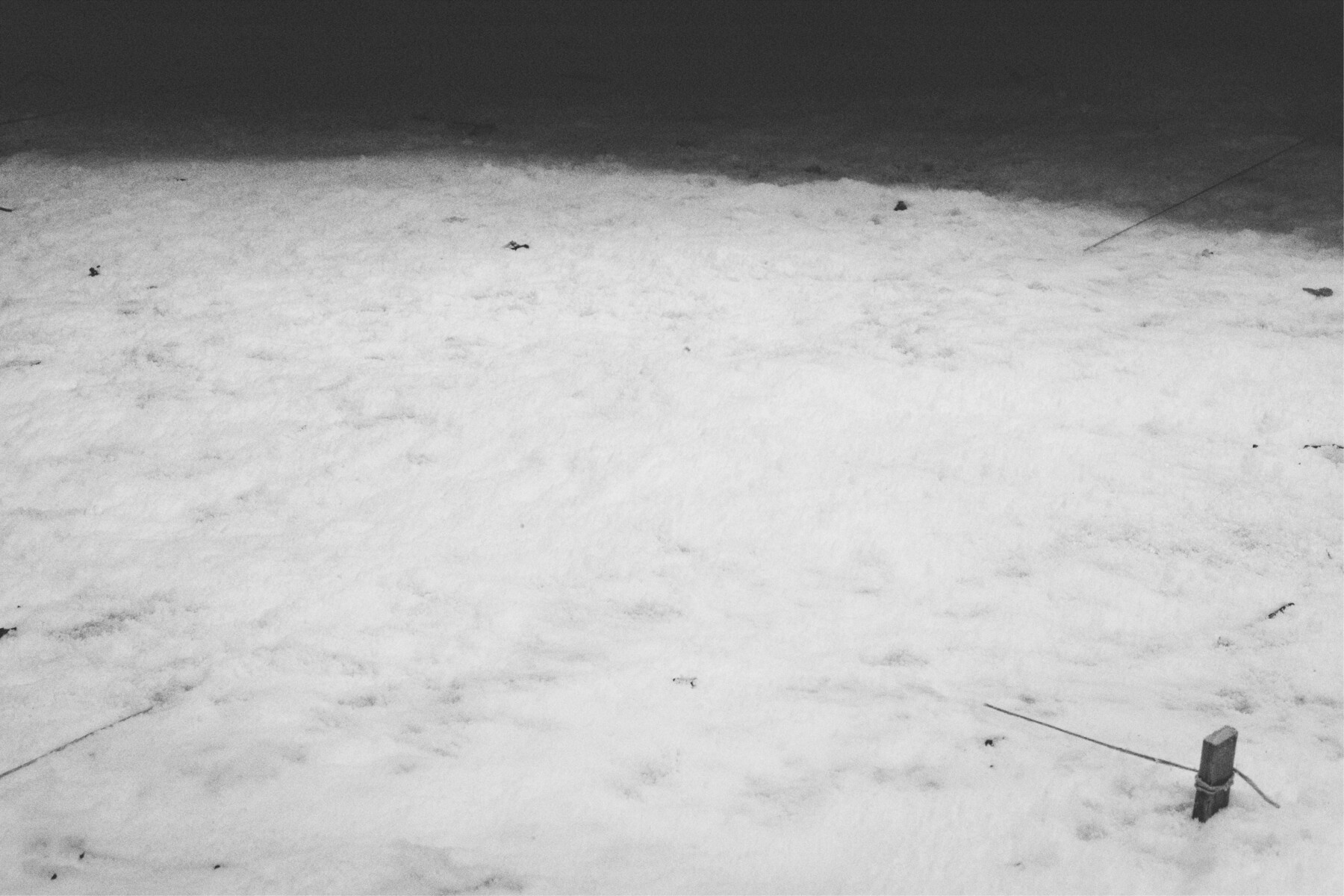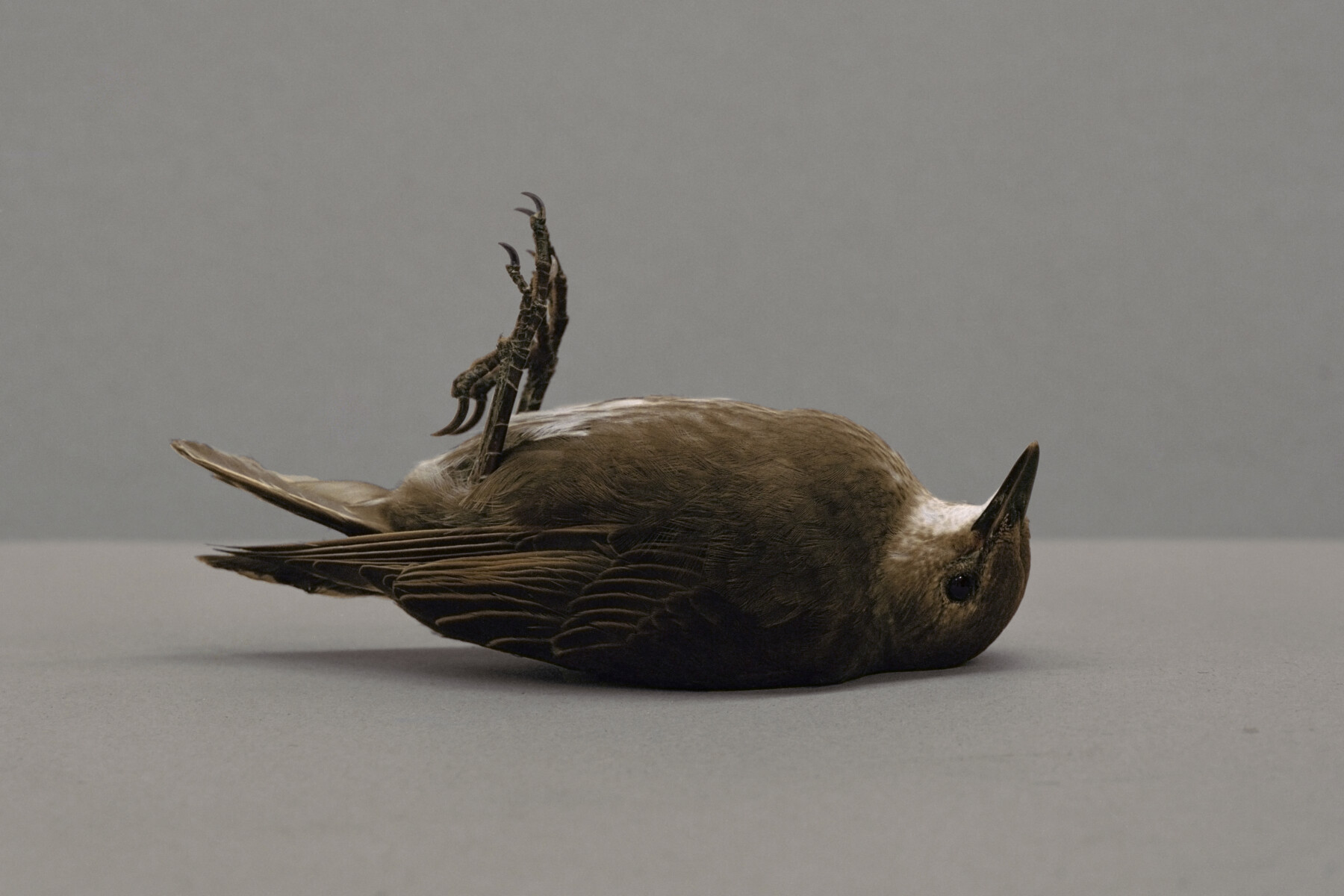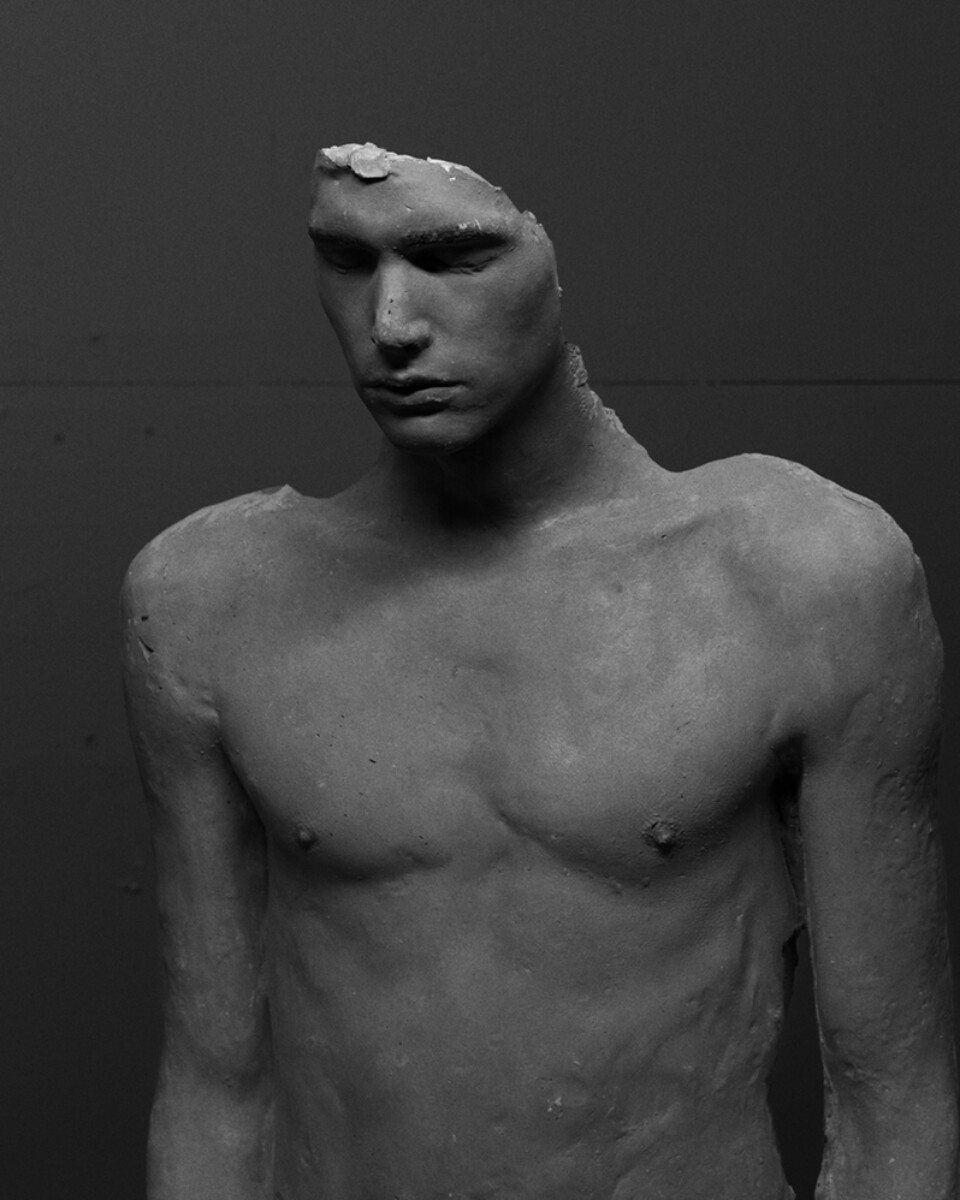The doctoral research project 'Hidden in plain sight' examines the imaging and identity of bodies from staged photography. What game is played with our perception when we look at images that show a constructed reality?
On the one hand, Callemin explores the unreliability of the photographic image. Photography, unlike many other media such as painting, is based on reality. When a camera is used to create a staged fictional image, that image remains inextricably linked to the reality that took place in front of the camera.
Almost every photographic image we see today is edited and shows an illusion to the eye where bodies are manipulated or even entire images are generated by software. Thus, the photographic image becomes a mirror for our own gaze and how we project our own meaning onto the visual world.
In his studio, Callemin uses photography's analogue box of tricks to create new worlds, sometimes over several months. Entire landscapes are constructed and maintained as a second reality that exists alongside ours. In these landscapes, Callemin places people, animals and even trees. The images challenge the viewer's perception: What are we looking at? Are we looking at someone assuming a role for a camera or are we looking at the real person as he or she is? Does our identity coincide with our bodies? Or is who we are an ever-changing concept that is also always fictional?
On a second level, the research deals with the function that fiction can perform in our lives. When people lack the conventional language to engage in historiography, creating fiction can be a way to get a grip on reality.
